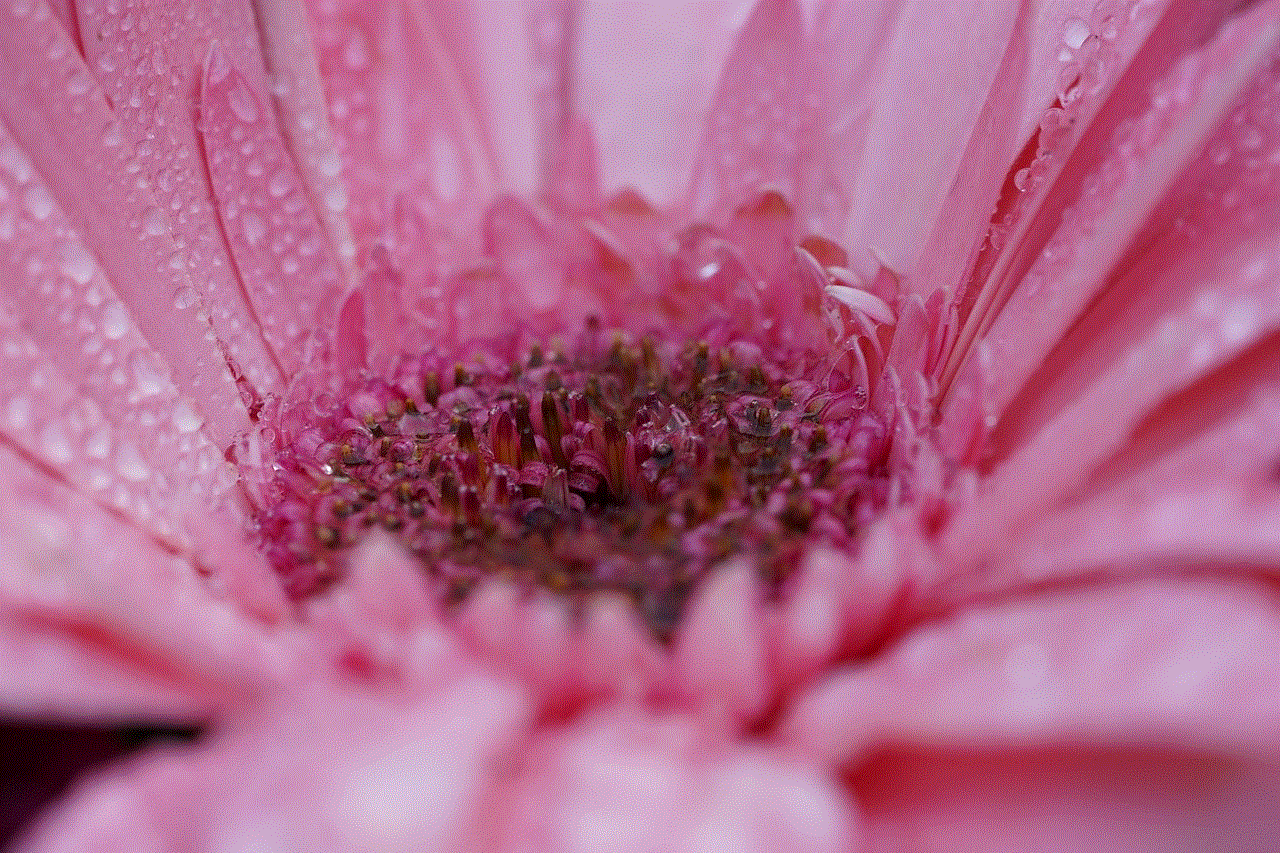youtube picture pages
YouTube is a household name when it comes to online video streaming and sharing platform. It has revolutionized the way we consume media and has become a prime source of entertainment for millions of people around the world. With its massive user base and diverse content, YouTube has something for everyone. From music videos to tutorials, vlogs to movie trailers, YouTube has it all. But one aspect of YouTube that often goes unnoticed is its picture pages.
Picture pages on YouTube are essentially the cover images or thumbnails that appear on each video. They are the first thing that viewers see when browsing through videos and play a crucial role in attracting their attention. In this article, we will dive deep into the world of YouTube picture pages and explore their significance, impact, and evolution over the years.
The Significance of YouTube Picture Pages
Picture pages are an essential aspect of YouTube for both creators and viewers. For creators, it is their first chance to make a good impression on potential viewers. A visually appealing and attention-grabbing thumbnail can entice viewers to click on the video and watch it. It is the first step towards gaining views and increasing engagement on a video.
On the other hand, for viewers, picture pages can help in deciding whether a video is worth watching or not. With millions of videos available on YouTube, picture pages act as a filter for viewers. They can quickly scan through thumbnails and decide which video they want to watch based on the image.
Impact of Picture Pages on Video Views
It is a well-known fact that a video’s thumbnail can significantly impact its views and engagement. A compelling thumbnail can increase the click-through rate (CTR) of a video, which is the percentage of viewers who click on a video after seeing its thumbnail. Higher CTR means more views and ultimately more engagement on the video.
YouTube’s algorithm also takes into account the CTR of a video when ranking it in search results and recommending it to viewers. This means that a good thumbnail can not only attract viewers but also improve the visibility and discoverability of a video.
Evolution of YouTube Picture Pages
When YouTube was first launched in 2005, picture pages were not given much importance. The thumbnails were static and were chosen randomly from a few frames of the video. However, as YouTube grew in popularity, creators started to realize the importance of picture pages in attracting viewers. This led to the evolution of thumbnails on YouTube.
In 2009, YouTube introduced custom thumbnails, allowing creators to upload their own images for their videos. This gave them more control over the appearance of their videos and allowed them to create more attention-grabbing thumbnails.
In 2011, YouTube introduced the concept of “suggested images” for thumbnails. These were automatically generated images from the video that creators could choose from. This made it easier for creators to select an appropriate thumbnail without having to create one themselves.
In 2013, YouTube introduced the ability to upload custom GIF thumbnails, making them more dynamic and eye-catching. This was a game-changer for creators who could now use animated thumbnails to capture viewers’ attention.
In recent years, YouTube has also introduced the concept of “end screens” and “cards” that appear at the end of a video or during playback. These allow creators to promote their other videos and engage with viewers, further increasing the importance of picture pages.
Best Practices for Creating YouTube Picture Pages
With the evolution of picture pages on YouTube, there are certain best practices that creators can follow to make their thumbnails stand out and attract viewers.
1. Use high-quality images: The first step towards creating a good thumbnail is to use high-quality images that are clear and visually appealing.
2. Use bright and bold colors: Bright and bold colors can make a thumbnail stand out in a sea of other videos. They can also convey the mood or theme of the video.
3. Include text: Adding text to a thumbnail can make it more informative and give viewers a glimpse of what the video is about. However, it is important to keep the text short and easy to read.
4. Use close-up shots: Close-up shots of faces or objects can make a thumbnail more engaging and help viewers connect with the video.
5. Be consistent: It is important to maintain consistency in the design and style of thumbnails to create a cohesive brand image.
6. Test different thumbnails: Creators can experiment with different thumbnails and track their performance to see which ones work best for their content.
7. Avoid clickbait: While it is essential to have an attention-grabbing thumbnail, it is equally important not to use misleading or clickbait images. This can lead to a negative impact on the credibility of the channel.
8. Optimize for different devices: With the rise of mobile viewing, it is crucial to ensure that thumbnails are optimized for different devices and screen sizes.
9. Use custom thumbnails for live streams: For live streams, it is recommended to use custom thumbnails to attract viewers before the stream begins.
10. Keep it relevant: The thumbnail should accurately represent the content of the video. Using a misleading image can lead to a high drop-off rate and a negative impact on the channel’s performance.
Conclusion
In conclusion, YouTube picture pages are a crucial aspect of the platform that can significantly impact a video’s views and engagement. With the constant evolution of picture pages, it is important for creators to stay updated with the latest best practices and trends to make their thumbnails stand out. As YouTube continues to grow and evolve, it is safe to say that picture pages will play an even more significant role in attracting and engaging viewers.
how to view hidden folders in windows 8
How to View Hidden Folders in Windows 8
Windows 8 is a widely used operating system that offers a plethora of features and customization options. One of the common customization features that users often utilize is the ability to hide folders. Hiding folders can provide an added layer of privacy and security for sensitive files and documents. However, there may be instances when you need to view these hidden folders for various reasons. In this article, we will explore different methods to view hidden folders in Windows 8.
Method 1: Using the File Explorer
The File Explorer is the default file management tool in Windows 8. It allows users to navigate through their files and folders easily. To view hidden folders using the File Explorer, follow the steps below:
1. Open the File Explorer by pressing the Windows key + E on your keyboard or by clicking on the folder icon in the taskbar.
2. Navigate to the folder where the hidden folder is located.
3. Click on the “View” tab located at the top of the File Explorer window.
4. In the “Show/hide” section, check the box next to “Hidden items.” This will display all hidden folders and files in the selected directory.
5. You should now be able to see the hidden folders. They will appear slightly faded compared to normal folders.
Method 2: Using the Control Panel
Another method to view hidden folders in Windows 8 is by using the Control Panel. The Control Panel is a centralized hub that allows users to manage various aspects of their computer ‘s settings. To access hidden folders via the Control Panel, follow these steps:



1. Press the Windows key + X on your keyboard to open the Power User Menu.
2. From the menu, select “Control Panel” to open the Control Panel window.
3. In the Control Panel, change the view to “Large icons” or “Small icons” by clicking on the drop-down menu located at the top right corner of the window.
4. Scroll down and click on the “Folder Options” icon. This will open the Folder Options window.
5. In the Folder Options window, click on the “View” tab.
6. Under the “Advanced settings” section, look for the option that says “Hidden files and folders.”
7. Select the option that says “Show hidden files, folders, and drives.” This will make all hidden folders and files visible.
8. Click on the “Apply” button at the bottom of the window, followed by the “OK” button.
9. You should now be able to see the hidden folders in the File Explorer.
Method 3: Using the Command Prompt
The Command Prompt is a powerful tool in Windows that allows users to perform various tasks using command-line instructions. To view hidden folders using the Command Prompt, follow these steps:
1. Press the Windows key + X on your keyboard to open the Power User Menu.
2. From the menu, select “Command Prompt” to open the Command Prompt window.
3. In the Command Prompt window, type “cd /d %userprofile%” (without the quotes) and press Enter. This will navigate to your user profile directory.
4. Type “dir /ah” (without the quotes) and press Enter. This command will display all hidden folders and files in the current directory.
5. You should now be able to see the hidden folders listed in the Command Prompt window.
Method 4: Using the Run Command
The Run command is a quick way to access various Windows tools and features. To view hidden folders using the Run command, follow these steps:
1. Press the Windows key + R on your keyboard to open the Run dialog box.
2. In the Run dialog box, type “control folders” (without the quotes) and press Enter. This will open the Folder Options window.
3. Follow steps 5 to 9 from Method 2 to enable the display of hidden folders.



Conclusion
Viewing hidden folders in Windows 8 is a straightforward process that can be done using various methods. Whether you prefer using the File Explorer, Control Panel, Command Prompt, or the Run command, you can easily access and view hidden folders in a few simple steps. By being able to view hidden folders, you have better control over your computer ‘s file management and can ensure the privacy and security of your sensitive files and documents.
tracking my girlfriend
Title: The Ethics of Tracking Your Partner: A Comprehensive Analysis
Introduction:
In the modern digital age, where technology has become an integral part of our lives, it’s no surprise that tracking apps and tools have gained popularity. However, one controversial aspect of this trend is tracking one’s romantic partner. While some argue that monitoring a girlfriend’s activities can help build trust and ensure safety, others consider it a breach of privacy and an invasion of personal boundaries. This article aims to explore the ethical implications of tracking a significant other, weighing the benefits against the potential harms, and discussing alternative strategies for fostering healthy relationships based on trust and communication.
1. Understanding the Motives Behind Tracking:
Tracking a girlfriend can stem from various motives, such as concerns about fidelity, safety, or simply curiosity. While intentions may seem justified, it’s essential to examine the potential consequences before diving into such actions.
2. Privacy and Trust:
One of the primary concerns with tracking a partner is the violation of their privacy. Trust is a fundamental pillar of any relationship, and engaging in secretive tracking behaviors can erode this trust, leading to resentment and emotional distance.
3. Consent and Communication:
The cornerstone of ethical tracking lies in obtaining explicit consent from the partner. Openly discussing concerns and insecurities can help establish a mutual understanding of the need for tracking and set boundaries that both parties are comfortable with.
4. The Thin Line Between Safety and Control:
While safety concerns can be valid reasons for tracking, it is crucial to distinguish between genuine concern and controlling behavior. Excessive monitoring can lead to a toxic power dynamic, undermining the autonomy and independence of the tracked partner.
5. Building Trust Through Open Dialogue:
Instead of resorting to tracking, fostering trust through open dialogue and active communication is a healthier approach. Regularly discussing expectations, concerns, and insecurities can help build a strong foundation of trust and understanding.
6. Promoting Healthy Boundaries:
Every individual has a right to personal space and privacy. Encouraging healthy boundaries within a relationship allows both partners to maintain their individuality and fosters an environment of respect and trust.
7. The Emotional Impact on the Tracked Partner:
Being tracked can lead to feelings of suffocation, anxiety, and a sense of being constantly monitored. This emotional toll can strain the relationship and potentially damage the bond between partners.
8. Alternative Approaches to Tracking:
Instead of resorting to tracking apps, alternative approaches can be explored. For instance, couples can agree on regular check-ins, share location voluntarily, or set up designated emergency contacts to ensure safety without violating privacy.
9. Overcoming Insecurities:
Instead of relying on tracking as a band-aid solution for personal insecurities, it is essential to address these issues individually or with the help of a professional. Building self-confidence and self-assurance can contribute to healthier relationships.
10. The Importance of Professional Guidance:
In cases where tracking becomes a persistent issue in a relationship, seeking professional guidance from therapists or relationship counselors can help navigate the complex dynamics and restore trust.
Conclusion:



While tracking a girlfriend might seem like a means to ensure trust and safety, it is crucial to consider the ethical implications and potential consequences. Open communication, consent, and mutual understanding should be the primary focus in any relationship. By fostering trust and maintaining healthy boundaries, partners can build a strong and secure foundation, ensuring a happier and more fulfilling relationship.